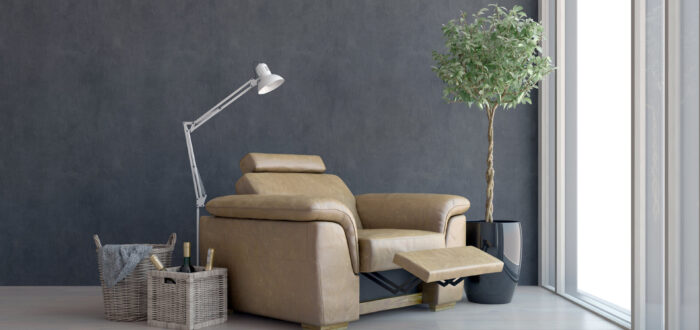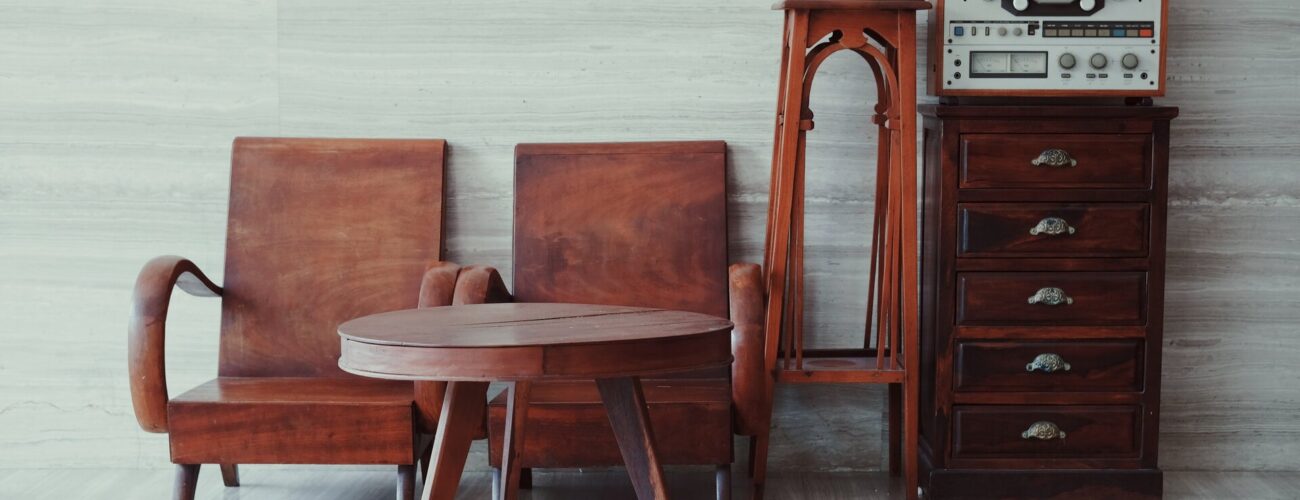

How to Repurpose Old Furniture When Moving Into a New Home
Posted in How-to,Moving Essentials on August 24, 2023
Moving cross-country into a new home provides an exciting opportunity to create a fresh living space that reflects your personal style. If you’re looking for a creative and cost-effective solution to breathe new life into your new home, here’s a guide on how to repurpose old furniture. Explore how to transform those tired pieces into unique and functional elements that will add character and charm to your living space.
Repurposing furniture involves assessing its condition, functionality, and style. Incorporate repurposed pieces by ensuring they match your home’s aesthetic, integrating them with complementary items. Consider safety precautions and start with beginner-friendly projects. DIY skills are not essential, and resources are available for guidance.
Go Over Your Belongings and Assess Them
Before embarking on how to repurpose old worn-down furniture, it’s essential to go through your belongings and assess each piece. Take the time to evaluate the condition, functionality, and style of each item. Determine if the piece is structurally sound or if it requires repairs or refinishing. Consider whether the piece serves a practical purpose in your new home and if it fits with your desired aesthetic. By conducting this thorough assessment, you’ll be able to identify which pieces are worth repurposing and which may be better off replaced or donated.
Evaluate the Condition, Functionality, and Style of Each Piece
When evaluating your pieces, start by examining their condition. Check for any visible damage, such as scratches, chips, or broken parts. Determine if the damage can be easily repaired or if it requires professional assistance. Consider the functionality of each piece. Does it still serve its intended purpose, or could it be repurposed for a different function?
Additionally, evaluate the style of the furniture pieces. Does it align with your current interior design preferences, or can it be transformed to fit your new aesthetic? Taking these factors into account will help you make informed decisions about which items to repurpose.
Identify Furniture Items With Potential for Repurposing
Once you have assessed your belongings, it’s time to identify items with the potential for repurposing. Look for pieces that have sturdy frames or solid construction, as they can be transformed into entirely different pieces or given a new purpose. For example, a worn-out dresser might be repurposed as a stylish TV stand, or a wooden dining table could be transformed into a rustic desk.
Additionally, consider the materials used. Solid wood, for instance, can often be refinished and repainted to create a completely different look. Keep an open mind and let your creativity guide you as you identify the items that hold the most potential for repurposing.
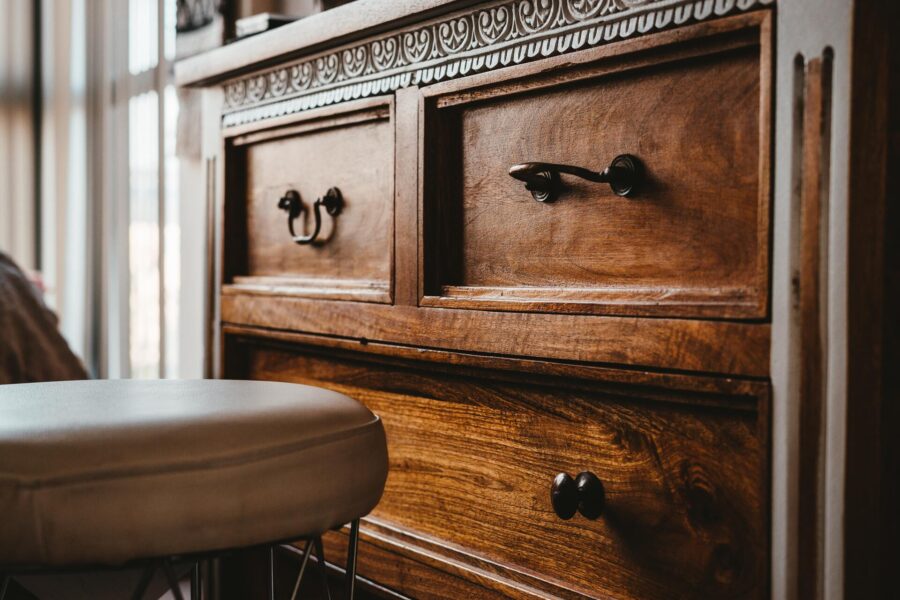
Determine Repurposing Opportunities
When it comes to repurposing old items, it’s crucial to determine the best opportunities for each piece. Start by evaluating the needs and layout of your new home to gain repurpose-old-furniture ideas. Consider the rooms and spaces that require furnishing and assess whether any of your existing pieces can fulfill those needs.
For example, a bookshelf that was previously used in the living room could find a new purpose in the office or bedroom, providing storage solutions and a decorative element. By aligning with the specific needs of your new space, you can make the most of your existing pieces.
Evaluate the Needs and Layout of Your New Home
As you evaluate the needs and layout of your new house, consider the functionality of each piece in relation to the space available. Determine if there are any gaps in your collection that could be filled by repurposing an old item. For instance, a sturdy coffee table might not fit in the living room but could be transformed into a functional entryway bench by adding some cushions and hooks for coats. By being mindful of the layout and requirements of your new space, you can identify creative solutions on how to repurpose furniture to sell or repurpose and maximize its usefulness.
Consider the Versatility of Each Item and Explore Alternative Uses
When looking for repurposing opportunities, consider the versatility of each item and explore alternative uses beyond their original purpose. A wooden dresser, for example, can be transformed into a bathroom vanity by removing the top drawers, adding a sink, and reconfiguring the plumbing. Similarly, a set of dining chairs can find new life as seating in a home office or as accent chairs in a bedroom. By thinking outside the box and considering the potential of each piece beyond its conventional use, you can uncover unique and functional repurposing opportunities.
Look for Creative Ways to Update or Transform the Appearance
Repurposing old items also provides an opportunity to update or transform their appearance. Consider giving the pieces a fresh coat of paint or refinishing the surfaces to match your new home’s style and color scheme. Upholstered pieces can be reimagined with new fabric, giving it a modern and personalized touch.
Explore different techniques such as distressing, stenciling, or decoupage to add unique patterns or textures to the furniture. By figuring out how to repurpose furniture with paint and incorporating creative ways to update the appearance, you can breathe new life into your old pieces and ensure they seamlessly blend into your new house’s aesthetic after you’ve moved. Here’s a video on how to paint old wood so that it looks fresh again.
How to Repurpose Old Furniture – Start With Planning and Preparation Early On
To ensure an efficient move and a smooth and successful process of reviving old items, it’s important to start with careful planning and preparation. By taking the time to prepare for the move and the process of furnishing a new space adequately, you can avoid unnecessary stress and make the most of your repurposing efforts.
Measure the Available Space in Your New Home
Before bringing your old items into your new home, it’s crucial to measure the available space. Take accurate measurements of each room, including doorways, hallways, and any tight corners that may affect furniture placement. This step is essential in determining whether your repurposed pieces will fit comfortably and functionally in their intended locations. By measuring beforehand, you can avoid moving mistakes and the frustration of discovering that a repurposed item doesn’t fit or block essential pathways once you’ve moved in.
Create a Furniture Layout or Floor Plan to Visualize the Placement
Once you have measured the available space, create a layout or floor plan to visualize how the repurposed furniture will fit. Consider the scale and proportions of each piece, as well as the flow and functionality of the room. By having a clear plan in place, you can make informed decisions about which items to reuse and where they will best serve their purpose. This step will also help you identify any potential issues or adjustments needed in advance, allowing for a smoother transition and setup.
Make a List of Any Necessary Supplies, Tools, or Materials
Repurposing old items often requires certain necessary supplies, tools, or materials to achieve the desired outcome. Before starting any creative projects, make a list of the essential items you’ll need. This might include sandpaper, paintbrushes, paint or stain, upholstery fabric, screws, or any specialized tools specific to the project.
By having a comprehensive list, you can ensure you don’t forget anything and have everything on hand when you begin the repurposing process, preventing delays or interruptions. Additionally, consider researching and gathering any reference materials or tutorials that can guide you through the repurposing techniques you plan to use. You can find cheap or even free supplies on sites like Craigslist.
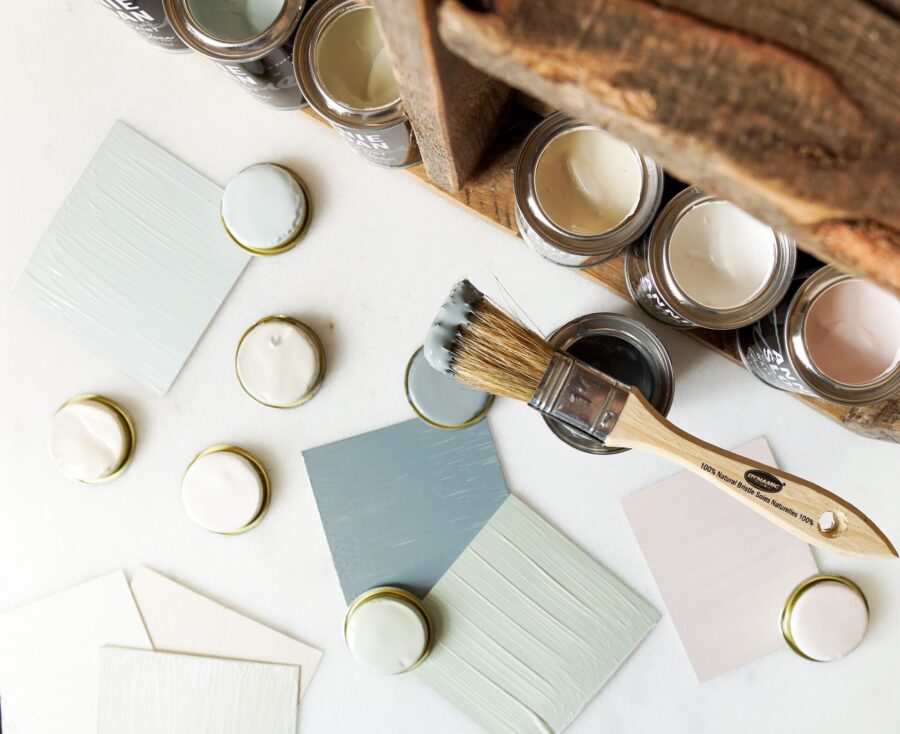
Embrace Different Repurposing Ideas and Techniques
When it comes to repurposing, the possibilities are endless. Embracing different ideas and techniques can breathe new life into your old pieces and transform them into functional and unique elements. Here are a few useful tips and exciting repurposing ideas to consider.
Transforming a Dresser Into a TV Console or Bathroom Vanity
A dresser that no longer suits your bedroom decor can find a new purpose as a TV set, console, or vanity for bathroom items. Remove the top drawers and replace them with a surface that can accommodate a television or sink. With a fresh coat of paint or stain and the addition of some stylish hardware, your repurposed dresser can become a focal point in your living room or bathroom, combining both style and functionality.
Converting an Old Door or Tabletop Into a Desk or Workbench
If you have an old door or a large tabletop lying around, consider repurposing it into a desk or workbench. Attach sturdy legs or repurpose sawhorses as the base, and you’ll have a spacious and unique workspace. Sand and finish the surface for a smooth and professional look. Learning how to repurpose wood furniture not only saves money but also adds character to your home office or creative space.
Repurposing Chairs Into Unique Plant Stands or Accent Pieces
Old chairs can be repurposed in a variety of ways. Transform them into charming plant stands by removing the seat and attaching a decorative pot or planter in its place. Alternatively, repurpose chairs as accent pieces by painting them in vibrant colors or reupholstering the seats with eye-catching fabrics. These repurposed chairs will add a touch of personality and greenery to any room.
Upcycling a Bookshelf Into a Bar Cart or Storage Unit
Give your old bookshelf a new lease on life by upcycling it into a bar cart or storage unit. Remove some shelves to create space for storing bottles, drinking glasses, and bar accessories. Add wheels for mobility and style, or paint it in a metallic finish for a sleek and modern bar cart look. Alternatively, reuse the bookshelf for storage in your kitchen, bedroom, or living room by adding baskets, decorative boxes, or fabric bins.
Reimagining a Coffee Table Into a Storage Ottoman or Bench
An old coffee table can be repurposed into a functional storage ottoman or bench. Remove the tabletop, add foam padding, and cover it with a fabric of your choice. Attach hinges to the base to create a lid that opens, revealing hidden storage space inside. This piece can serve as a stylish and versatile addition to your living room, providing extra seating and hidden storage for blankets, pillows, or other items.
Figure Out How to Incorporate Repurposed Furniture in Your New Home
Incorporating reused items seamlessly into a new space requires thoughtful consideration and strategic design choices. By following a few key strategies, you can ensure that your pieces blend harmoniously with your overall aesthetic and contribute to a cohesive and personalized living space.
To begin, it’s important to ensure that the repurposed piece matches the overall aesthetic and style of your new space. Consider the existing color palette, materials, and design elements. Choose repurposed items that complement these features or can be transformed to match.
Integrating repurposed items with complementary pieces is another effective strategy for creating a cohesive design. Consider the scale, proportion, and function of each piece. Pair repurposed with other items that harmonize in terms of size and style. This could involve placing a repurposed dresser alongside a contemporary sofa or combining repurposed chairs with a dining table that complements their design.
Lastly, use repurposed items to add unique character and personalized touches to different areas of your new home. Embrace the opportunity to infuse your space with your own style and creativity by repurposing smaller items, such as side tables, shelves, or decorative accents. For example, repurpose an old suitcase as a stylish end table or turn vintage crates into functional storage solutions. By strategically furnishing your home, you can add personality and create a space that feels truly yours.
By considering these strategies, you can seamlessly decorate after you’ve moved. With careful planning and a creative approach, your repurposed pieces will contribute to a cohesive design. It will also transform your new space into a personalized haven that reflects your style and resourcefulness.
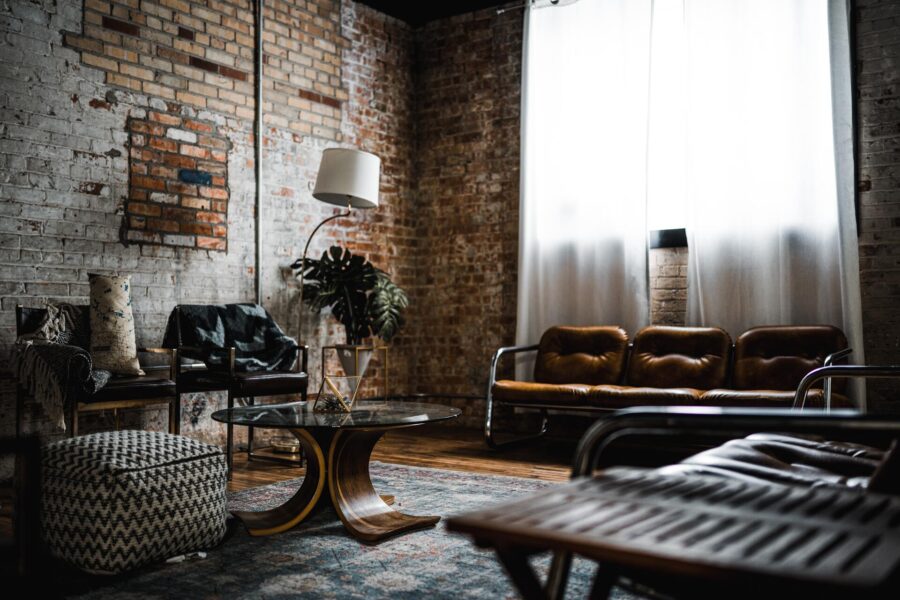
Before You Start With the Work Hire Cross Country Movers to Do the Heavy Lifting
Before diving into the work of repurposing old items, it’s important to consider the logistics of the long-distance moving process itself. Repurposing furniture requires time, effort, and creativity, but it’s equally crucial to ensure that your items are moved safely and efficiently in your new space.
Hiring long-distance movers for their cross-country moving services can alleviate the heavy lifting and transportation burden. Professional movers have the experience, equipment, and expertise to handle the logistics of moving across the country, ensuring that all your belongings are handled with care. So, contact us and allow our Cross Country Movers to take care of the packing services and transport your precious belongings, so you can start furnishing your new home.
FAQ
How Do I Determine Which Furniture Pieces Are Suitable for Repurposing?
To determine which pieces are suitable for repurposing, consider their condition, functionality, and style. Look for sturdy pieces with structural integrity that can be repaired or refinished if needed. Assess whether the item serves a practical purpose and if it can be transformed to match your desired aesthetic.
What Are Some Easy and Beginner-Friendly Repurposing Projects?
There are several easy and beginner-friendly projects you can consider. Some examples include transforming a wooden crate into a storage ottoman, an old ladder as a bookshelf, or converting a vintage suitcase into a unique side table. These projects often require minimal tools and can be completed with basic DIY skills.
How Can I Ensure the Repurposed Furniture Matches My New Home’s Style and Decor?
To ensure that repurposed furniture matches your new home’s style and decor, consider refinishing or painting the piece to align with the desired color scheme. Reupholstering with fabrics that compliment your overall aesthetic can also help achieve a cohesive look. Additionally, strategically placing the repurposed furniture alongside existing pieces that complement its style can contribute to a harmonious design.
Are There Any Safety Considerations or Precautions When Repurposing Furniture?
When repurposing furniture, it’s important to take safety considerations and precautions. Ensure proper ventilation when working with paints, stains, or other chemical products. Use appropriate safety gear such as gloves, goggles, and masks when necessary. Take care to handle tools and equipment properly, following manufacturer instructions. If needed, consult tutorials or seek professional guidance to ensure safe practices throughout the repurposing process.
Can I Repurpose Furniture Even if I Don’t Have Extensive DIY Skills?
Yes, you can repurpose furniture even if you don’t have extensive DIY skills. There are plenty of beginner-friendly repurposing projects that require basic tools and techniques. Start with simpler projects and gradually expand your skills as you gain confidence. Additionally, online resources such as tutorials, guides, and DIY communities can provide valuable guidance and inspiration. Don’t be afraid to experiment and embrace your creativity, even if you’re new to repurposing items.
